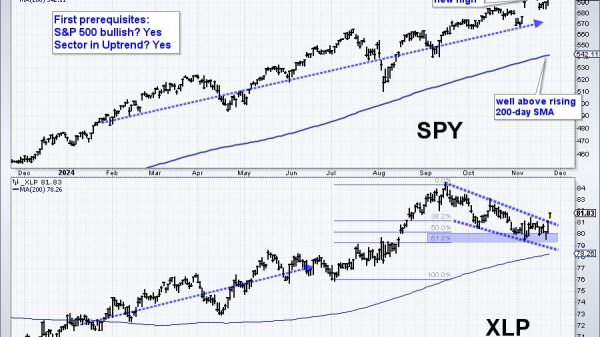Krit Chanwong
On April 22, 2024, the Center for Medicare and Medicaid Services (CMS) released a new rule that purportedly “enhances quality and fiscal and program integrity standards.” Unfortunately, this rule will likely increase Medicaid expenditures without achieving most of its stated goals.
Managed Care and “State‐Directed Payments”
Most of the CMS’s new rules contain regulations on Medicaid managed care and state‐directed payments. Explaining these terms will be essential in understanding the new rule’s shortcomings.
In the early 1980s, states began contracting with insurance companies to provide Medicaid care. This new delivery system, called “managed care,” was supposed to reduce the growth of Medicaid expenditures. By 2011, most states had adopted the system. Figure 1 shows that such cost savings did not occur.
In managed care, states pay for services through a per‐member monthly premium. This replaced an older delivery system called “fee‐for‐service,” whereby Medicaid paid providers for each specific service.
The switch from fee‐for‐service to managed care led to major problems for states. Generally, in a fee‐for‐service setting, Medicaid pays lower than Medicare and private insurance. To compensate, state Medicaid agencies provided hospitals with additional cash on top of their Medicaid patient revenues. The federal government forbade the sum of these additional payments and base Medicaid rates from exceeding what Medicare would have paid for the same services. As such, these payments came to be known as the “upper payment limit” (UPL) payments.
States could finance UPL payments using “hold‐harmless arrangements.” As described in Figure 2, these arrangements exploit the Federal Medical Assistance Percentage (FMAP) to gain more money from the federal government. States liked hold‐harmless arrangements, as it allowed them to receive more federal funds. Providers liked them because they would receive more revenue through increased reimbursement rates.
Historically, states with managed care could not make UPL payments as managed care payments were made through premiums and not by service. This meant that switching to managed care would have closed off hold‐harmless arrangements.
The situation changed in 2016 when the federal government allowed state Medicaid agencies to direct additional provider payments through contracted insurance companies. These payments came to be known as “state‐directed payments” (SDPs).
From 2017 to 2023, SDP expenditures grew from $10 billion to $69 billion, representing a compound annual growth of 38 percent. Multiple organizations, like the GAO and Medicaid Access and Payment Commission (MACPAC), have expressed concern about this rapid escalation. A large portion of the CMS’s new rule was written in response to these concerns.
The CMS’s New Rules
The first major SDP regulation found in the CMS’s new rule sets “a regulatory limit on the total payment rate using the ACR (average commercial rate) for inpatient hospital services, outpatient hospital services, qualified practitioner services at an academic medical center, and nursing facility services.”
The CMS believes that this reform will increase Medicaid expenditures, stating that “at least two thirds of the SDP submissions intended to raise total payment rates up to the ACR.” The CMS sees some value to this, claiming that rate increases will incentivize more providers to participate in managed care networks, thus increasing Medicaid accessibility.
The CMS’s claim is tenuous. It is unclear whether increasing Medicaid reimbursements improves Medicaid accessibility. In fact, a 2020 survey of physicians’ Medicaid acceptance found that the main barrier for accepting new Medicaid patients was capacity. Reimbursement rates were a tertiary concern. Moreover, a 2005 study found that the “effects of Medicaid fees on Medicaid acceptance are substantially lower in areas with high Medicaid managed care penetration and for physicians who practice in institutional settings.” Any rate increases, especially through managed care, are unlikely to increase accessibility.
In fact, increased Medicaid rates may also increase healthcare prices for other consumers. North Carolina’s SDP program increases Medicaid prices to 226 percent of Medicare rates. Much of this increased revenue goes to hospitals. According to Johns Hopkins professor Ge Bai, hospitals can then use “SDPs to subsidize and bolster physician practices they own, gaining a competitive advantage over other physician practices.” Acquisition lowers competition, which directly reduces the ability for insurers to negotiate lower prices for their members.
The CMS will also require states to “ensure that participating providers in an SDP arrangement attest that they do not participate in any hold‐harmless arrangement for any health care‐related tax.” (This regulation will not take effect until 2028.) The CMS also explicitly requires all SDP financing to conform “with all Federal legal requirements for the financing of the non‐Federal share.”
The CMS believes that this regulation will improve program transparency and end hold‐harmless arrangements.
However, seeing how this new regulation would increase transparency is hard. The CMS, for one, does not require these attestations to be made public. They will only be reviewed by government bureaucrats, who are not necessarily the model of transparency. Moreover, the hold‐harmless attestations are simply that: attestations. This regulation does not change the underlying incentives for providers and states to enter into hold‐harmless deals.
Moreover, making SDPs conform to federal regulations will probably not end hold‐harmless arrangements. In general, federal regulations ban hold‐harmless arrangements. An exception is made if the hold‐harmless arrangement costs less than six percent of the provider’s revenues. A 2021 MACPAC review found that the vast majority of states’ arrangements cost less than this level. This rule will most likely lead states to restructure their hold‐harmless arrangements to fit the six percent loophole.
Time for Congressional Action
The CMS’s new regulations are unlikely to accomplish any of its goals. Increasing Medicaid reimbursement rates is unlikely to improve accessibility. It may even harm non‐Medicaid patients. Making providers sign attestations, but not making the attestations public, will add another layer of bureaucracy. And current federal regulations are not robust enough to prevent the rise of hold‐harmless arrangements. These policies also have a high price tag of $50–220 billion over the next decade.
Congress needs to correct the careless policymaking of CMS bureaucrats. Closing the six percent loophole and other sensible Medicaid financial reforms may reduce Medicaid expenditures by $1.4 trillion over ten years. However, Medicaid has become too complicated. Congress should go further and consider turning Medicaid into a block grant program. My colleagues Chris Edwards and Michael Cannon have written extensively on the fiscal benefits of block‐granting Medicaid.
























